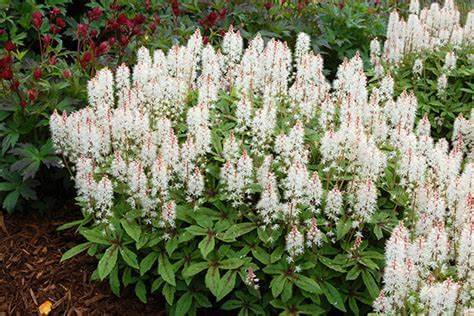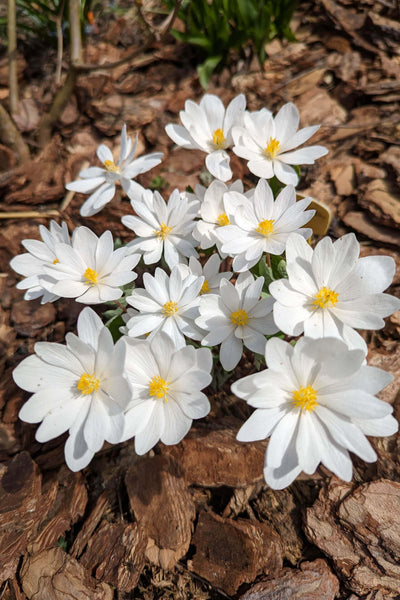Best Perennial Plants For Your Garden
If you want to create a stunning, low-renovation lawn that comes again year after year, perennial plant life is the manner to head. But with many such options available, it could be overwhelming to understand which to start. Choosing the right perennials for your lawn requires careful consideration of your climate, soil kind, solar publicity, and private preferences.
Consider Your Climate
The first thing to recall when selecting perennial plants is your weather. Different perennials thrive in distinctive environments, so it's essential to pick plant life that is well-proper to the conditions of your location. Check your USDA Hardiness Zone to decide which perennials will develop high quality in your region. It will assist in ensuring that your vegetation can survive the iciness and come lower back strong inside the spring.
Evaluate Your Soil Type
The next factor to take into account is your soil kind. Some perennials decide on properly draining soils, at the same time as others thrive in clay or loamy soils. Understanding the soil in your lawn lets you pick out plants to develop well and avoid those that could war. You can test your soil pH and nutrient ranges to determine what forms of vegetation will develop exceptionally.
Assess Sun Exposure
Another critical component to take into account is sun publicity. Different perennials require varying degrees of daylight, so picking out flora that will thrive in the quantity of light your garden gets is vital. Some perennials, including hostas, decide upon color, while others, including sunflowers, require complete solar. Be positive to recollect the amount and timing of daylight on your lawn before selecting.
Personal Preferences
Ultimately, your possibilities must also function in selecting perennials in your garden. Do you need a lawn? Is it inexperienced, or are you looking for pops of color? Do you prefer conventional or modern garden styles? Consider what you want to reap along with your lawn and select perennials to help you reap that vision.
Research Perennial Varieties
Once you've considered your climate, soil, solar exposure, and private alternatives, it's time to investigate specific perennial sorts. Look for plant life that is perfect for your garden's conditions and will offer the colors and textures you seek. You can discover information on unique perennials in gardening books and online assets. Also, invite advice from a local nursery or gardening center.
Pay Attention to Hardiness Zones
Many plants can be grown as perennials in warmer climates but can't cope with our cold iciness temperatures, so we ought to develop them as annuals alternatively. Most perennials are hardy throughout many zones—for example, Echinacea is hardy thru Zones three–9. Check the hardiness zones listed for your plant's description to ensure it may be grown as a perennial where you live.
Perennials Need to Be Divided
As your perennials develop with each yr, they'll begin to spread. Sometimes they'll get too large, or in the middle, a part of your plant gets old and die off, ensuing in a donut-shaped flower show. To avoid this, you can dig up your perennials every few years, split them in half, and replant one of the halves in a distinct spot.
When choosing the area of your plant life, it's critical to maintain their length and unfold in mind. If you plant them too tightly collectively and don't give them enough space to unfold, you'll encounter small increases and other issues down the street.
Choose Perennials that Complement Your Existing Landscape
When selecting which perennials to feature on a garden mattress, you must remember some factors. Sometimes it's easy to get enthusiastic about a plant's appearance, but you also want to create cohesion in your yard! Consider your contemporary design regarding height, color, and boom habits, which includes spreading perennials or clump growers, and look for different plants that complement the existing design.
Dianthus Plant
Dianthus perennials are perfect for including a splash of color in any garden. These captivating florae provide an abundance of delicate, colorful blooms in sunshades of red, crimson, red, and white. The specific foliage adds an interesting texture to the lawn as well.
It's beautiful to see a dianthus garden in full bloom. The blossoms of these flowers will cover your yard with lovely and fragrant blooms in the spring, summer, or autumn. The plant's toughness measures in years, and the foliage is lush for the season. There is a dianthus for every lawn, no matter the length of the lawn mattress.
Wild Geranium
A natural woody perennial plant called wild geranium blooms with shades of crimson and red. This plant will brighten up your outside space all year with its vibrant color and evergreen leaves. Not only that, but it's also relatively resilient and can face up to maximum climate situations.
Geranium maculatum has lush, dark green leaves and stalks. They produce lovely foliage that perfectly complements the lush, jewel-toned plant life. Each bloom has five gently rounded petals measuring one to 2 inches. Each petal has a small carry that lends a shallow cup form to the flower. The colors are typically rich crimson, red, or lavender.
Blood Root
Bloodroot is a famous decorative plant for its early spring blooms and attractive foliage. It is regularly used in wooded area gardens or naturalized regions and can be grown in numerous soil kinds and favorable situations. However, it has to be planted with coloration as it flourishes in partial solar.
Bloodroot has many traditional uses, including emetic, cough, and respiratory ailment treatment and topical treatment for skin conditions like warts and skin tags. Modern scientific study does not support the use of bloodroot and that the plant may be toxic if consumed or utilized improperly.
Foam Flower
The perennial blooming plant genus Tiarella, sometimes called foam flower, is unique to North America. These plants are recognized for their attractive foliage and sensitive, frothy flowers, which offer them their not-unusual call of foam flower. Tiarella flowers are famous in forest gardens, as they pick shady conditions and wet, nicely draining soil.
Low, mounding foliage with deeply lobed, frequently varying leaves is typical of tiarella blooms. They produce thin spikes of tiny, celebrity-shaped blooms in shades of white to scarlet in the spring. Bees and other pollinators find this plant life to be astounding.
Any lawn or garden can benefit from tiarella foam flower plants, especially those that receive some or all of the shade. They require little preservation beyond the regular watering and low fertilization and might upload color and hobby to your outdoor space during the developing season.
Chicory Plant
Chicory is a perennial plant that belongs to the daisy circle of relatives (Asteraceae). It is native to Europe but is now full-size in different sector components.
Chicory has an extended, thick taproot that can grow as much as 30 cm (12 inches) deep inside the soil. The plant can reach a height of up to at least one. Five meters (5 toes) and has blue or lavender vegetation that blooms in the summer. The flora is composed of several small florae organized in a dense cluster.
The chicory leaves are deeply lobed and (12 inches) long. They taste sour and are often utilized in salads or cooked as a vegetable. The chicory root also can be roasted and ground to make a coffee substitute.
Chicory is added for medicinal use, specifically for digestive troubles. The root carries inulin, a carbohydrate that acts as a prebiotic, feeding the beneficial bacteria within the gut. In addition, chicory incorporates compounds that include lactucopicrin, which has anti-inflammatory and ache-relieving properties.
Chicory is also used as a forage crop for farm animals and is once in a while planted as a cover crop to improve soil health. It uses traditional medication for numerous illnesses, including liver and gallbladder issues, arthritis, and pores and skin situations.


